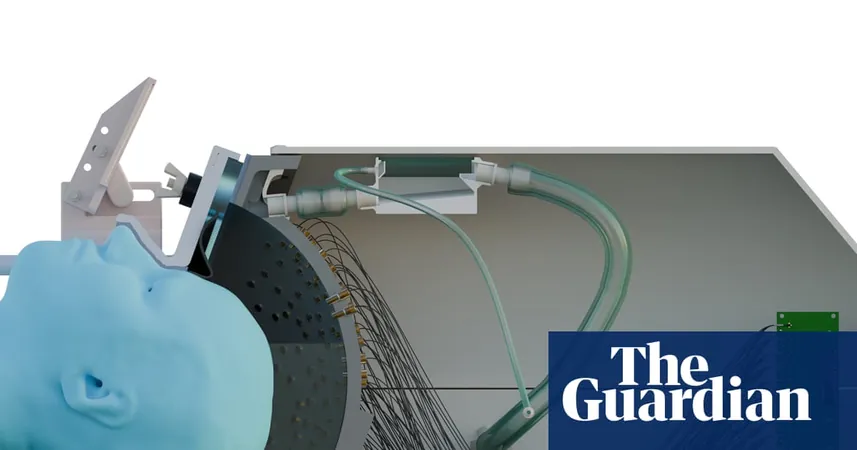
Revolutionary Ultrasound Helmet: A Game-Changer in Non-Invasive Parkinson's Treatment!
2025-09-05
Author: Chun
Breakthrough in Neurological Treatments
Imagine a world where treating neurological conditions is as easy as wearing a helmet! New research unveils a groundbreaking ultrasound ‘helmet’ that could transform the way we approach diseases like Parkinson’s, offering a non-invasive alternative to outdated and invasive methods.
Tiny Targets, Maximal Impact
This innovative device can target brain regions just one millimeter wide—remarkably smaller than what was previously possible, making it a potential replacement for deep brain stimulation (DBS). Not only could it help Parkinson's patients, but it also shows promise for treating depression, Tourette syndrome, Alzheimer’s, chronic pain, and even addiction.
How It Works: A Revolution in Precision
Unlike DBS, which involves implanting electrodes deep into the brain, this helmet uses ultrasound to send mechanical waves precisely where they’re needed. Researchers have finally cracked the code on delivering these waves accurately, leading to unprecedented results.
A Closer Look at the Technology
Published in *Nature Communications*, the study introduces this innovative system equipped with 256 ultrasound sources that fits snugly inside an MRI scanner. Though the helmet itself may feel a bit bulky at first, participants quickly adjusted to the experience.
Promising Preliminary Findings
In trials with seven volunteers, scientists directed ultrasound waves to the lateral geniculate nucleus (LGN)—a critical pathway for visual information—achieving remarkable accuracy. According to senior author Prof. Charlotte Stagg, "That alone was extraordinary. No one has done it before!" Follow-up tests indicated that modulating the LGN can lead to lasting effects in the brain, hinting at the possibility of targeting motor control regions for Parkinson's patients to alleviate tremors.
Expert Validation and Future Prospects
Neuroscience expert Elsa Fouragnan hailed this proof of concept as a significant milestone that paves the way for clinical applications. The project, a decade in the making, showcases a collaborative effort between University College London and Oxford University, striving to bring this visionary tool to life.
A Personal Touch to Innovation
The road to this innovation has personal significance for Stagg, who jokes that by the time clinical applications roll out, her daughter, born during the project's inception, will be heading to university! The research team's dedication extends to ensuring comfort and usability, with plans to utilize AI for autonomous functionality, potentially allowing patients to use the helmet in their homes.
The Future of Non-Invasive Brain Treatment
As the team gears up for further trials addressing diseases like schizophrenia and stroke recovery, the potential for this ultrasound helmet is limitless. With the right refinements, this device could revolutionize the landscape of neurological treatment, making invasive procedures a thing of the past.



 Brasil (PT)
Brasil (PT)
 Canada (EN)
Canada (EN)
 Chile (ES)
Chile (ES)
 Česko (CS)
Česko (CS)
 대한민국 (KO)
대한민국 (KO)
 España (ES)
España (ES)
 France (FR)
France (FR)
 Hong Kong (EN)
Hong Kong (EN)
 Italia (IT)
Italia (IT)
 日本 (JA)
日本 (JA)
 Magyarország (HU)
Magyarország (HU)
 Norge (NO)
Norge (NO)
 Polska (PL)
Polska (PL)
 Schweiz (DE)
Schweiz (DE)
 Singapore (EN)
Singapore (EN)
 Sverige (SV)
Sverige (SV)
 Suomi (FI)
Suomi (FI)
 Türkiye (TR)
Türkiye (TR)
 الإمارات العربية المتحدة (AR)
الإمارات العربية المتحدة (AR)